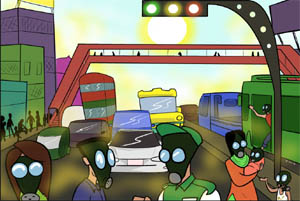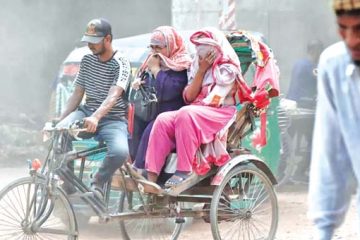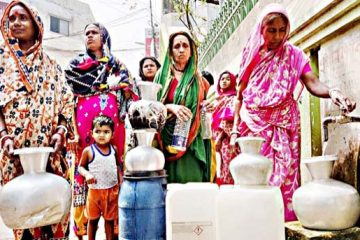Views
Debra Efroymson
If I had a dollar for every time I’ve heard that “traffic was particularly bad today,” I could have retired already.
Over the years, people have hazarded various suggestions as to the cause of the terrible Dhaka traffic and its potential solutions. Causes include: not enough roads for all the cars; poor traffic management or a lack of operational signals; lack of lanes; an insufficient number of buses, including school buses; too many rickshaws; and the “disorderly” movement of pedestrians. Each cause suggests its own solution: build more roads/flyovers/elevated expressways;
modernise traffic management and fix the traffic signals; mark lanes clearly; ban rickshaws; throw pedestrians in jail if they fail to use foot overbridges.
Some of those solutions have been attempted. The result? Well, the traffic flow sure hasn’t improved, but as cars continue to gain priority on the roads, our air gets ever more polluted and road crashes become ever more frequent.
I’m not sure why we’re surprised. If you try to enable millions of people to move about within a small space, especially via the space-hogging private cars, what you will get is congestion. For Dhaka, it would be helpful to learn from
the experience of other cities in the world, rather than try untested ideas and hope that they will magically work.
Here are a few basic truths that are illustrated around the world: the more that cities rely on the automobile for transport, the worse the congestion is – as well as pollution, road crashes, and other problems related to cars. Since
cars require so much space for movement and parking, vast amounts of urban land are expended to accommodate them. As a result, there is less space for trees, parks, and playgrounds, while the cost of housing goes up. We can never build roads as fast as people buy new cars, and wider roads simply invite more cars.
But the opposite is also true; when roads are permanently closed to cars, or lanes are converted from car lanes to bicycle lanes and to widen footpaths, much of the former traffic simply disappears. This is known as traffic evaporation.
Cities that limit parking through high fees, implement congestion charges, and limit where cars can go, while simultaneously improving the quality of public transit and making walking and cycling more convenient, attractive, and safer, experience a decrease in congestion.
But not just that. Cities that control cars also experience less pollution and fewer road crashes. When the ground level of buildings is used for shops and offices, their rent subsidises that of the flats above, and housing becomes more affordable.
With mixed-use neighbourhoods, the need for travel decreases, which also reduces congestion. If we ensured that each neighbourhood had decent schools, then children could walk or cycle to school, making them healthier and happier while
dramatically reducing congestion. Fewer cars would also mean more space for canals, parks, playgrounds, and urban trees, all of which make for more liveable and cooler cities with less flooding.
Sure, we can continue to try to tinker around the edges, maintaining our car dependency while hoping that somehow congestion will magically decrease. We can continue to complain about traffic, mourn those lost to road crashes, and build ever more impressive monuments to our love affair with the automobile.
Or we could implement measures that would actually reduce congestion by discouraging and disenabling car use while also improving our quality of life in numerous ways. Of course, there is a sacrifice: All the convenience that we get – or hope to get – from cars and motorbikes. But we should also consider all that we could gain if we greatly reduced our use of individual motorised transport: cleaner air, safety, some peace and quiet, and far more liveable streets and cities. Surely those benefits would outweigh the loss of status and imagined convenience.
Debra Efroymson is executive director of the Institute of Wellbeing and author of “Beyond Apologies, Defining and Achieving an Economics of Wellbeing.”








